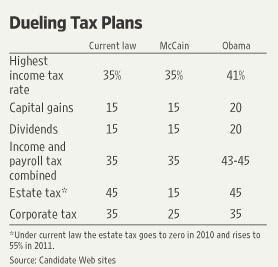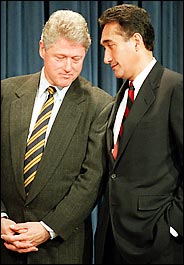Lee Ohanian is the co-author of a much-cited article in the highly-ranked Journal of Political Economy on the economics of the Great Depression. Below is a paragraph from his recent analysis of our current situation:
(p. A17) I am particularly concerned about bad policies because significantly higher taxes have been proposed by Barack Obama. His plan would raise the marginal tax rate on the most productive workers more than 10 percentage points — an increase that would bring us near Western European levels. His plan would also raise capital income taxes, taxing capital gains and dividends at 20%, compared to a 15% rate under Sen. John McCain’s plan. A five percentage-point difference might strike you as small, but it is not. I have calculated that a five percentage-point difference in overall capital income taxation over the long haul is equal to a difference in the nation’s capital stock of about 18%. This means a 6% difference in GDP and a 6% difference in the average wage rate. This means that real GDP and the average wage would fall, gradually but persistently declining about 6% after 25 years. That’s not quite a Great Depression, but a significant step towards one.
For the full commentary, see:
LEE E. OHANIAN. “Good Policies Can Save the Economy; Why we need lower tax rates and more skilled immigrants.” The Wall Street Journal (Weds., OCTOBER 8, 2008): A17.
The academic article co-authored by Ohanian is:
Cole, Harold L., and Lee E. Ohanian. “New Deal Policies and the Persistence of the Great Depression: A General Equilibrium Analysis.” Journal of Political Economy 112, no. 4 (August 2004): 779-816.








